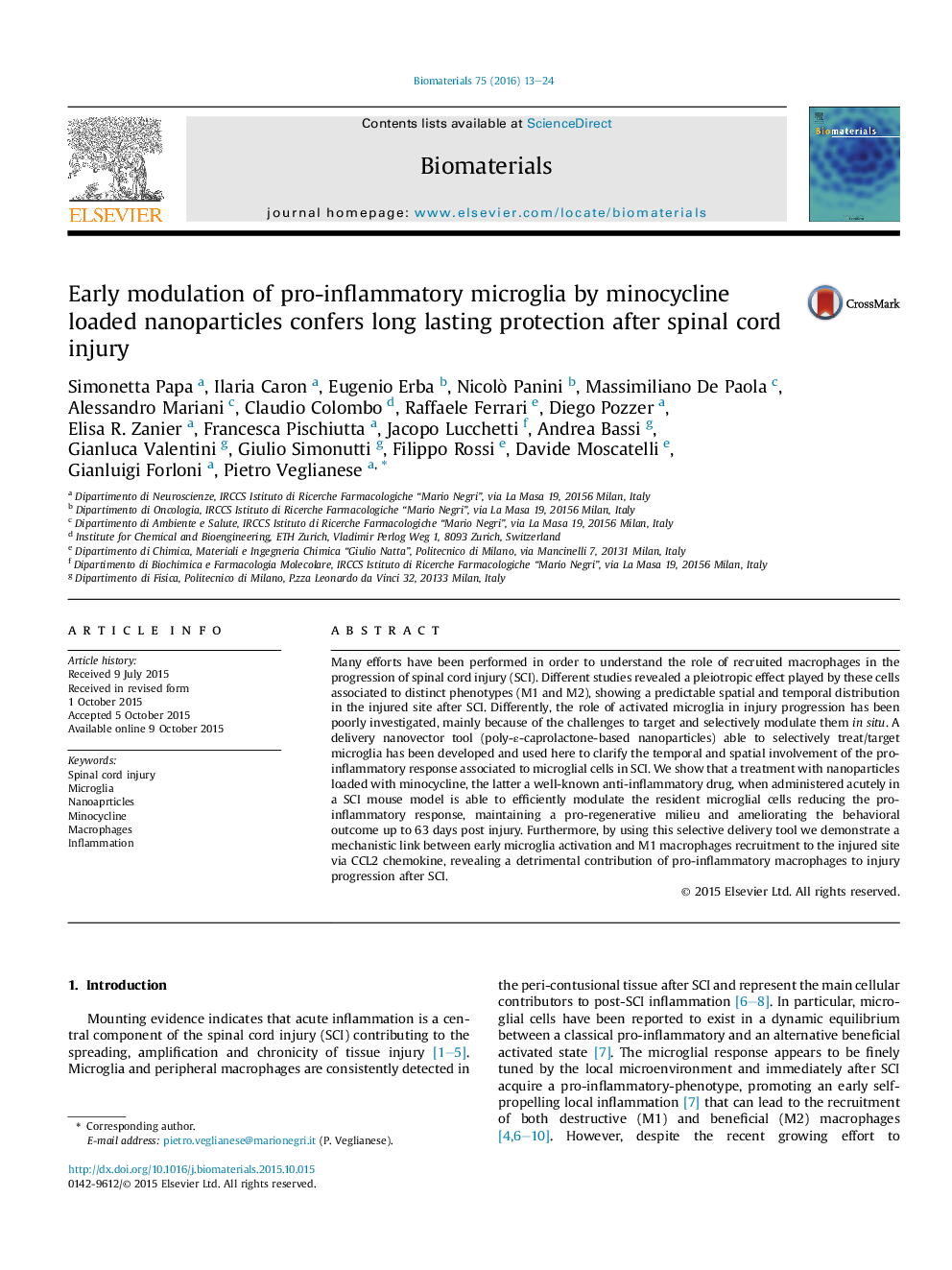| Article ID | Journal | Published Year | Pages | File Type |
|---|---|---|---|---|
| 5499 | Biomaterials | 2016 | 12 Pages |
Many efforts have been performed in order to understand the role of recruited macrophages in the progression of spinal cord injury (SCI). Different studies revealed a pleiotropic effect played by these cells associated to distinct phenotypes (M1 and M2), showing a predictable spatial and temporal distribution in the injured site after SCI. Differently, the role of activated microglia in injury progression has been poorly investigated, mainly because of the challenges to target and selectively modulate them in situ. A delivery nanovector tool (poly-ε-caprolactone-based nanoparticles) able to selectively treat/target microglia has been developed and used here to clarify the temporal and spatial involvement of the pro-inflammatory response associated to microglial cells in SCI. We show that a treatment with nanoparticles loaded with minocycline, the latter a well-known anti-inflammatory drug, when administered acutely in a SCI mouse model is able to efficiently modulate the resident microglial cells reducing the pro-inflammatory response, maintaining a pro-regenerative milieu and ameliorating the behavioral outcome up to 63 days post injury. Furthermore, by using this selective delivery tool we demonstrate a mechanistic link between early microglia activation and M1 macrophages recruitment to the injured site via CCL2 chemokine, revealing a detrimental contribution of pro-inflammatory macrophages to injury progression after SCI.
